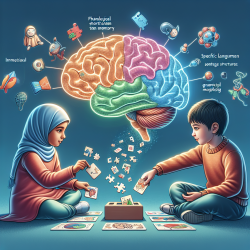Introduction
In the evolving landscape of therapy services, telepractice has emerged as a revolutionary approach, bringing joy and accessibility to children in need of occupational therapy. At TinyEYE, we understand that creating a safe and nurturing environment is paramount to fostering successful outcomes. This blog will explore how safety in telepractice can lead to joyful and effective therapy sessions, ultimately enhancing the development of children within the educational system.
The Importance of Safety in Telepractice
Safety is a cornerstone of effective therapy. In the context of telepractice, safety encompasses several dimensions:
- Data Security: Ensuring that all interactions and data shared during therapy sessions are protected from unauthorized access.
- Privacy Compliance: Adhering to regulations such as HIPAA to protect the confidentiality of student information.
- Safe Environment: Providing a controlled and distraction-free virtual space for children to engage in therapy.
By prioritizing these safety measures, we create a foundation for joyful learning experiences that encourage children to thrive.
Joyful Learning through Telepractice
Telepractice offers unique opportunities for children to engage in therapy sessions from the comfort of their familiar environments. This comfort can significantly enhance their willingness to participate and learn. Here are some ways telepractice fosters joy in therapy:
- Personalized Interactions: Tailoring sessions to meet the individual needs of each child, ensuring that therapy is both relevant and engaging.
- Interactive Tools: Utilizing digital resources and interactive tools that make learning fun and captivating.
- Flexible Scheduling: Offering flexible scheduling options that accommodate the busy lives of families, reducing stress and increasing participation.
These elements not only bring joy to the children but also contribute to more effective learning outcomes.
Enhancing Outcomes with Data-Driven Decisions
At TinyEYE, we believe in making informed decisions based on data. By leveraging data analytics, we can track the progress of each child, tailor therapy plans to meet their evolving needs, and ensure that their Individualized Education Program (IEP) goals are being met effectively.
Data-driven insights allow therapists to:
- Monitor Progress: Regularly assess the child's development and make necessary adjustments to therapy strategies.
- Identify Trends: Recognize patterns in therapy outcomes, helping to refine approaches and enhance effectiveness.
- Collaborate Effectively: Work closely with educators and parents to create a cohesive support system around the child.
By embracing data-driven decisions, we ensure that each child receives the highest quality of care and support.
Conclusion
Incorporating safety and joy into telepractice not only enhances the therapy experience for children but also leads to more successful outcomes. At TinyEYE, we are committed to providing safe, engaging, and effective therapy services that empower children to reach their full potential. By focusing on data-driven decisions and personalized care, we strive to create a brighter future for every child we serve.










